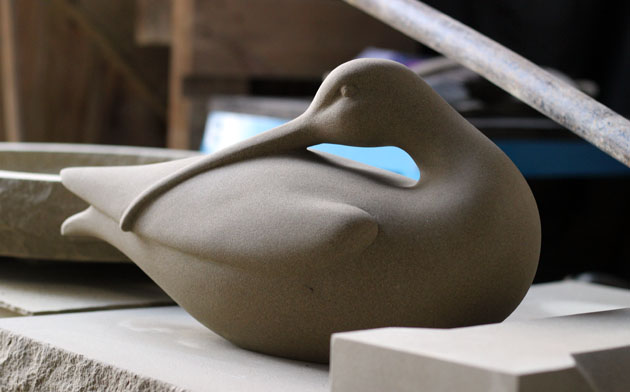Curlew

Curlew sculpture carved in Yorkstone – 17″ x 7″ x 9″
I’ve shown this large, elegant wading bird at rest in this sculpture, with its head turned, resting over its back and wing. Although it is a quiet pose, there is still alertness in the eye. Curlew fly up to the moorland here around March time to breed and are always an evocative and welcome sign of spring.
The curlew is characterised by a long, slender downcurved bill and mottled brown plumage. The English name Curlew is imitative of the bird’s call but may have been influenced by the Old French corliu, “messenger” from courir “to run”.
They are one of the most ancient lineages of waders and feed in mud, or very soft ground, searching for worms and other invertebrates with their long bills.
Their nest is a bare scrape on moorland, or nearby meadow, for the three to six eggs laid in April or May, which hatch one month later. It has been noted that Curlews nest close to Kestrel nests, as they can offer protection from predators such as Corvids, (even though Kestrels also predate Curlew’s nests).
I’m encouraged by this, as I have Kestrels nesting again in my old Barn Owl nest box at the workshop. Hopefully, Curlews will come and raise their young nearby and I can get the opportunity of seeing and experiencing them really close.

2 Comments
Jennifer, that is so gentle, in repose, but so strong as a whole. Wonderful.
Hello David – Thankyou – I’m just waiting for a good day weatherwise to take some pictures of it out in the open, where it should be!